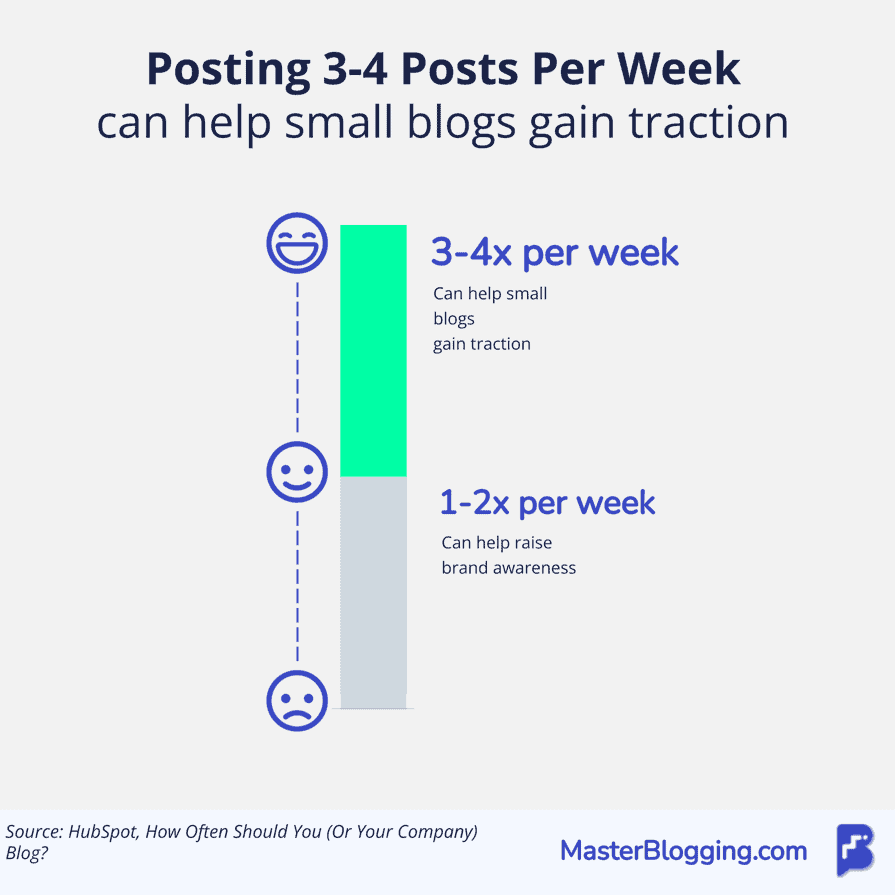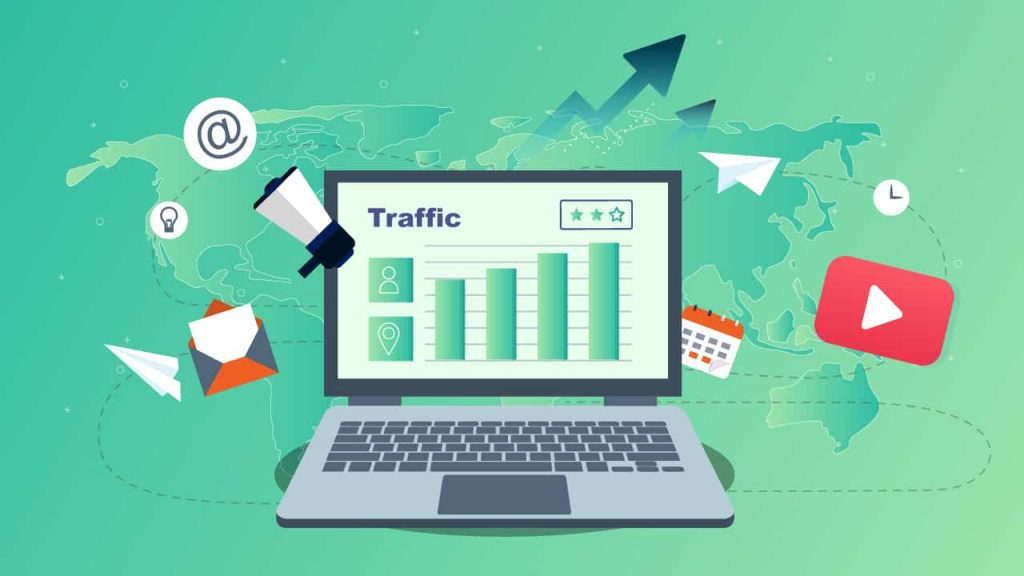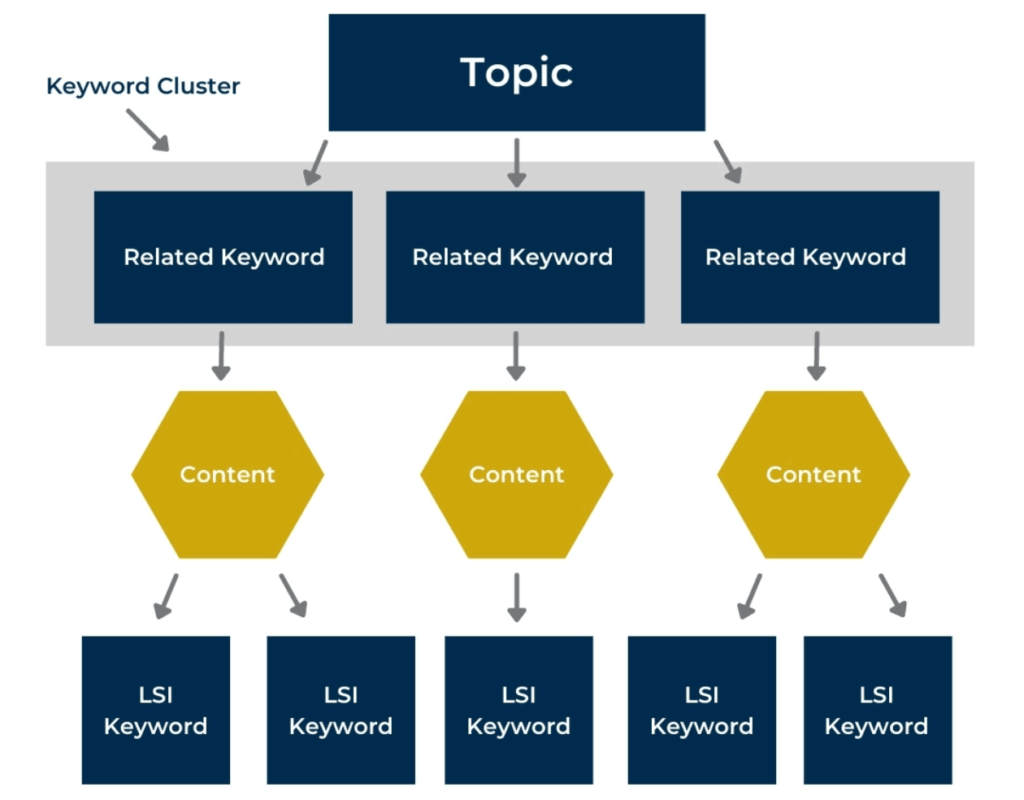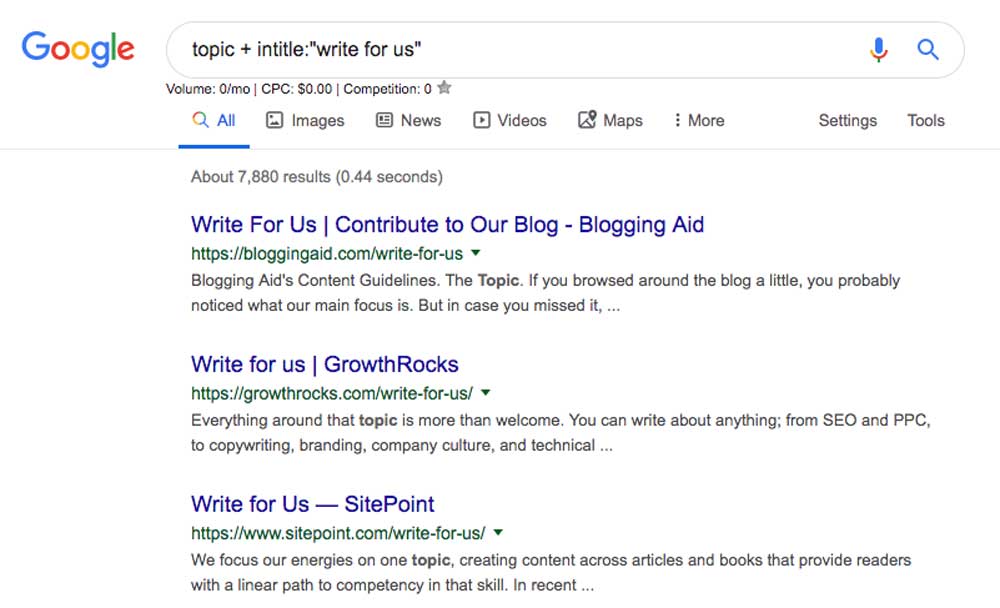Blog Marketing: What It Is and How to Do It
Blog marketing is a highly effective strategy for businesses to reach their target audience and promote their products or services. By creating and maintaining a blog, companies can provide valuable content that attracts and engages readers, driving website traffic. Blogs can seamlessly integrate with websites, making managing and accessing helpful information easier.
One of the critical benefits of blog marketing is its cost-effectiveness compared to traditional advertising methods. Businesses can provide valuable content to their audience without expensive ad campaigns. Furthermore, regularly updating a blog with relevant keywords can improve a website's visibility in search engine results, leading to higher organic traffic.
In addition to driving traffic, blog marketing helps businesses establish themselves as industry experts and build trust with their audience. By consistently providing high-quality and informative content, companies can engage with their target market through comments and feedback, creating a stronger connection and building credibility. This leads to increased customer loyalty and brand recognition.
Table of Contents
Benefits of Blog Marketing for Businesses

Blogging is a powerful tool for businesses to increase website traffic and reach a larger audience. By regularly publishing valuable content, companies can attract visitors to their website, who may then explore other products or services offered. Blogs also allow businesses to establish authority and credibility in their industry. By demonstrating expertise through informative and insightful blog posts, companies can build trust with their audience and position themselves as industry leaders.
Another benefit of blog marketing is the ability to build closer relationships with customers. Blogs provide a platform for businesses to engage with their audience through comments and feedback. This two-way communication allows companies to understand their customers' needs and preferences better, improving customer satisfaction and loyalty.
Furthermore, blog marketing opens up revenue opportunities for businesses. Companies can generate additional income streams through various monetisation methods, such as advertising, affiliate marketing, and selling products or services. This diversifies their revenue sources and provides an avenue for growth and expansion.
In summary, blog marketing offers several benefits for businesses, including increased website traffic, enhanced credibility, improved customer relationships, and revenue generation. By consistently providing valuable content and engaging with their audience, companies can leverage the power of blogging to achieve their marketing goals.
Effective Blog Marketing Strategies
Creating a comprehensive blog marketing plan is essential for achieving success. This involves defining clear goals and identifying the target audience. By understanding the blog's objectives and the specific audience it aims to reach, businesses can tailor their content to meet the needs and interests of their target market.
Researching and choosing relevant topics to write about is another crucial aspect of an effective blog marketing strategy. By conducting keyword research and analysing industry trends, businesses can ensure their blog posts are valuable to their audience and optimised for search engine visibility.
Planning a content calendar is essential for maintaining reader engagement and building a loyal audience. By creating a schedule for publishing blog posts, businesses can ensure a steady flow of fresh and valuable content. This helps keep readers interested and improves search engine rankings by showing consistency in content creation.
Identifying key metrics to track and measure success is essential in evaluating the effectiveness of the blog marketing strategy. By monitoring metrics such as website traffic, engagement, conversions, and social media interactions, businesses can gain insights into the performance of their blog and make data-driven decisions to improve results. Regularly analysing these metrics allows enterprises to identify areas of improvement and make necessary adjustments to their blog marketing strategy.
In conclusion, an influential blog marketing strategy involves setting clear goals, researching and choosing relevant topics, planning a content calendar, and tracking key metrics. By implementing these strategies, businesses can optimise their blog marketing efforts and achieve maximum results.
Promoting the Blog

Promoting the blog is crucial to ensure its visibility and reach a wider audience. There are several effective ways to promote a blog and increase its exposure.
Social media platforms play a vital role in blog promotion. By sharing blog posts on platforms like Facebook, Twitter, and Instagram, businesses can reach a larger audience and drive traffic to their blog. Creating engaging and shareable content tailored to each platform can maximise visibility and encourage social sharing.
Participating in online communities and forums related to the blog's niche can also help promote the blog. Businesses can establish themselves as industry experts and attract new readers by actively engaging in discussions, providing valuable insights, and sharing relevant blog posts.
Collaborating with other bloggers and influencers is another effective way to promote the blog. Businesses can tap into new audiences and expand their reach by partnering with influencers or guest blogging on relevant websites. Collaborations can be sponsored content, guest posts, or joint promotions, significantly increasing blog visibility and attracting new readers.
Email marketing is a powerful tool for blog promotion. Businesses can regularly communicate with their audience and promote new blog posts by building an email list of blog subscribers. Personalising email campaigns based on subscriber preferences and demographics can enhance engagement and drive traffic back to the blog.
In summary, promoting a blog involves leveraging social media, participating in online communities, collaborating with influencers, and utilising email marketing. By implementing these strategies, businesses can increase the visibility of their blog and attract a wider audience.
Leveraging Social Media for Blog Marketing

Social media platforms provide numerous opportunities for blog marketing. They allow businesses to share blog posts, engage with the audience directly, and build a community around their blog's niche. Here's how companies can leverage social media effectively for blog marketing:
- Share blog posts on social media platforms: By sharing them on platforms such as Facebook, Twitter, LinkedIn, and Instagram, businesses can reach a wider audience and drive traffic back to their blog.
- Create engaging and shareable content: Social media users are likelier to engage with visually appealing, informative, and shareable content. By creating compelling and visually appealing blog post graphics, businesses can increase the chances of sharing their content and attracting more readers.
- Engage with the audience: Social media allows businesses to engage with their audience directly. Companies can build a stronger connection with their audience and foster community by responding to comments, answering questions, and participating in discussions.
- Leverage social media advertising: Social media platforms offer targeted advertising options, allowing businesses to reach a broader audience that may be interested in their blog content. Companies can promote their blog posts and increase brand visibility by utilising social media advertising features.
- Collaborate with influencers: Partnering with influencers and industry experts with a strong following and credibility can help businesses tap into their audience and gain exposure to new readers. Influencers can share blog posts, provide endorsements, or even contribute guest posts to the blog.
In conclusion, leveraging social media for blog marketing involves:
- Sharing blog posts.
- Creating engaging content.
- Engaging with the audience.
- Utilising social media advertising.
- Collaborating with influencers.
By implementing these strategies, businesses can maximise the reach and impact of their blog marketing efforts.
SEO Techniques for Blogs

Implementing SEO techniques is essential for improving a blog's visibility in search engine results. Here are some indispensable SEO techniques for blogs:
- Perform keyword research: Conducting keyword research helps identify relevant keywords and phrases users search for. By understanding what keywords your target audience is using, you can optimise your blog posts to align with their search intent.
- Optimise blog posts with targeted keywords: Incorporate keywords in titles, headings, and content to improve search engine rankings. However, using keywords naturally and avoiding keyword stuffing is essential, as search engines prioritise high-quality, user-friendly content.
- Build high-quality backlinks: Backlinks from reputable websites act as a vote of confidence for search engines, indicating that other websites find your content valuable and worth linking to. Building high-quality backlinks through guest blogging, influencer collaborations, and industry partnerships can boost a blog's search engine rankings.
- Optimise meta tags and descriptions: Crafting compelling and concise meta tags and descriptions can improve click-through rates from search engine results pages. By optimising meta tags and descriptions with relevant keywords and enticing copy, you can increase the chances of users clicking on your blog posts.
- Improve website loading speed: Website loading speed is crucial for enhancing user experience and SEO. A slow-loading website can negatively impact user engagement and search engine rankings. Optimising images, reducing server response time, and leveraging caching techniques can help improve website speed.
In summary, implementing SEO techniques such as conducting keyword research, optimising blog posts with targeted keywords, building high-quality backlinks, optimising meta tags and descriptions, and improving website loading speed can help improve a blog's visibility in search engine results and attract more organic traffic.
Leveraging Guest Blogging and Influencer Marketing

Guest blogging and influencer marketing are potent strategies for expanding the reach and visibility of a blog. Here's how businesses can leverage these techniques for blog marketing:
- Guest blogging: Guest blogging involves writing and publishing blog posts on other relevant websites. By guest blogging on websites with a similar target audience, businesses can tap into new readers and gain exposure to a broader audience. This can help drive traffic back to their blog and increase brand visibility.
- Building relationships with influencers and industry experts: Influencer marketing is a strategy that involves collaborating with influencers and industry experts to promote a blog. By partnering with influencers with a solid following and credibility in the industry, businesses can tap into their audience and gain exposure to new readers. Influencers can share blog posts, provide endorsements, or even contribute guest posts to the blog. Influencer marketing can help businesses reach a wider audience, gain credibility in their industry, and attract new readers to their blog. Companies can leverage their existing audience and credibility to promote their blogs by building relationships with influencers and industry experts.
In conclusion, leveraging guest blogging and influencer marketing can significantly expand the reach and visibility of a blog. By guest blogging on relevant websites and collaborating with influencers, businesses can tap into new audiences, gain exposure, and attract more readers to their blogs.
Email Marketing Strategies for Blogs
Email marketing is an effective strategy for promoting blog content and engaging with subscribers. Here are some key email marketing strategies for blogs:
- Build an email list of blog subscribers: Encourage visitors to subscribe to the blog by offering valuable content upgrades or incentives. Building an email list allows businesses to communicate with their audience and promote new blog posts regularly.
- Create valuable and engaging email content: Craft compelling and informative emails that drive traffic back to the blog. Including snippets of blog posts or exclusive content in emails can entice subscribers to click through and read the full blog post.
- Personalise email campaigns: Segment the email list and tailor content to specific audience segments based on subscriber preferences and demographics. By delivering more relevant and targeted emails, businesses can enhance engagement and drive more traffic to the blog.
- Utilise automation: Set up automated email sequences that deliver relevant content based on subscriber actions or triggers. By nurturing leads through automated email campaigns, businesses can guide them through the buyer's journey and drive conversions.
- Track email marketing metrics: Monitor email marketing metrics such as open rates, click-through rates, and conversions to evaluate the success of email campaigns. Analysing these metrics allows businesses to make data-driven improvements to their email marketing strategy and optimise performance.
In summary, email marketing is a powerful strategy for promoting blog content and engaging with subscribers. By building an email list, creating valuable email content, personalising campaigns, utilising automation, and tracking key metrics, businesses can maximise the impact of their email marketing efforts and drive more traffic to their blog.
Monetising a Blog
Monetising a blog is the process of generating revenue from the blog's content and audience. Here are some standard methods for monetising a blog:
- Displaying advertisements: Displaying ads through ad networks like Google AdSense is a popular way to monetise a blog. By displaying relevant ads on the blog, businesses can earn revenue based on the number of impressions or clicks the ads receive.
- Affiliate marketing: Affiliate marketing involves promoting products or services and earning a commission for each sale made through the affiliate link. Businesses can earn passive income from their blog by partnering with relevant affiliate programs.
- Selling digital products: Another popular monetisation method is selling digital products like ebooks, online courses, or templates. Businesses can leverage their expertise to create valuable digital products and sell them directly to their audience.
- Sponsored content: Offering sponsored content opportunities to brands and businesses can generate additional revenue. By collaborating with brands and featuring sponsored content on the blog, companies can earn money through sponsored blog posts, product reviews, or brand partnerships.
- Premium content or membership subscriptions: Creating and selling premium content or offering membership subscriptions is a strategy for monetising a blog. By offering exclusive content or access to a community of like-minded individuals, businesses can provide additional value to their audience and charge for premium access.
In summary, several methods for monetising a blog include displaying advertisements, affiliate marketing, selling digital products, sponsored content, and premium content or membership subscriptions. By diversifying revenue streams and implementing monetisation strategies, businesses can generate income from their blog and turn them into profitable ventures.
Tracking and Analysing Blog Performance

Tracking and analysing the performance of a blog is crucial for making data-driven decisions and optimising the blog marketing strategy. Here are some critical steps to track and analyse blog performance:
- Set up blog analytics tools: Use tools like Google Analytics or other tracking software to gather data and insights. These tools provide valuable information about website traffic, engagement, conversions, and user behaviour.
- Monitor keyword rankings: Track the rankings of target keywords to assess the effectiveness of SEO efforts. By analysing keyword rankings, businesses can identify opportunities for improvement and optimise their blog content accordingly.
- Analyse reader demographics and behaviour: Gain insights into blog readers' demographics, interests, and preferences. By understanding the target audience, businesses can tailor their content to meet their needs and expectations.
- Make data-driven improvements: Analyse blog performance metrics and identify areas for improvement. Businesses can optimise their blog marketing strategy and achieve better results by making data-driven decisions.
- Set goals and benchmarks: Define specific and measurable goals to track progress and stay on track. Businesses can measure success by setting benchmarks and adjusting their blog marketing strategy.
In conclusion, tracking and analysing blog performance is essential for optimising the blog marketing strategy and achieving success. Businesses can effectively track and improve their blog's performance by setting up analytics tools, monitoring keyword rankings, analysing reader demographics and behaviour, making data-driven improvements, and setting goals and benchmarks.
Conclusion
In conclusion, blog marketing is a valuable strategy for businesses to reach their target audience, increase website traffic, build credibility, engage with customers, generate revenue, and track performance. By implementing effective blog marketing strategies such as creating a plan, filling the blog with valuable content, promoting it through various channels, and leveraging social media, SEO, guest blogging, influencer marketing, and email marketing, businesses can maximise the benefits of blog marketing.
Additionally, monetising a blog through advertising, affiliate marketing, selling digital products, sponsored content, or premium content can create additional revenue streams. By tracking and analysing blog performance, businesses can make data-driven improvements to their blog marketing strategy and achieve tremendous success.
